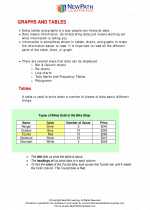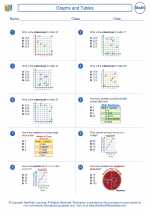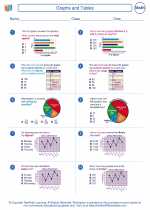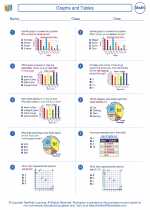Tessellations Study Guide
What are Tessellations?
A tessellation is a pattern of shapes that fit perfectly together without any gaps or overlaps. These shapes can be polygons, such as triangles, squares, or hexagons.
Types of Tessellations
There are three main types of tessellations:
- Regular Tessellations: These are made up of regular polygons that have equal sides and angles. Examples include tessellations made of equilateral triangles, squares, and hexagons.
- Semi-regular Tessellations: These are made up of more than one type of regular polygon. An example is a tessellation made up of both triangles and squares.
- Irregular Tessellations: These are made up of irregular polygons, such as trapezoids or kites. These shapes still fit together without any gaps or overlaps.
Creating Tessellations
To create a tessellation, you can start with a single shape and then use it to fill the plane without any gaps or overlaps. This can be done by rotating, reflecting, and translating the shape to fit together with itself.
Real-World Examples
Tessellations can be found in many real-world objects and designs, such as tiles, quilts, pavement patterns, and even some animals' skin patterns.
Study Tips
Here are some tips for studying tessellations:
- Practice creating tessellations using different shapes and combinations of shapes.
- Look for tessellations in your surroundings and identify the shapes that are used.
- Understand the concept of symmetry and how it relates to tessellations.
- Explore the work of famous artists, such as M.C. Escher, who used tessellations in their art.
◂Math Worksheets and Study Guides Fifth Grade. Graphs and Tables
Study Guide Graphs and Tables
Graphs and Tables  Worksheet/Answer key
Worksheet/Answer key Graphs and Tables
Graphs and Tables  Worksheet/Answer key
Worksheet/Answer key Graphs and Tables
Graphs and Tables  Worksheet/Answer key
Worksheet/Answer key Graphs and Tables
Graphs and Tables 

 Worksheet/Answer key
Worksheet/Answer key
 Worksheet/Answer key
Worksheet/Answer key
 Worksheet/Answer key
Worksheet/Answer key

The resources above cover the following skills:
Geometry (NCTM)
Specify locations and describe spatial relationships using coordinate geometry and other representational systems.
Make and use coordinate systems to specify locations and to describe paths.
Connections to the Grade 5 Focal Points (NCTM)
Data Analysis: Students apply their understanding of whole numbers, fractions, and decimals as they construct and analyze double-bar and line graphs and use ordered pairs on coordinate grids.